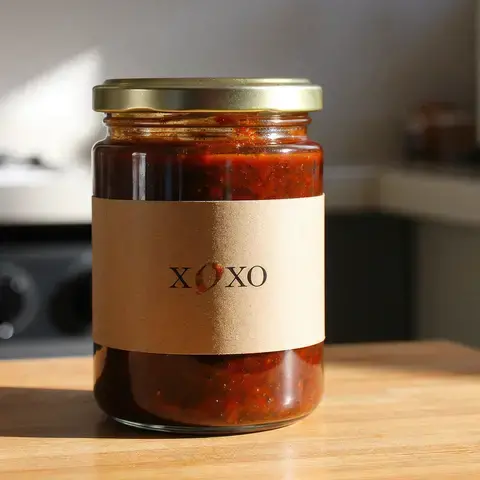Serves 4
For the squash:
- ½ lb/250g candy roaster, koginut, honey nut, or butternut squash
- 1 cup/200g heavy cream
- 1 tsp/5g salt
Method
1. Start a fire with a few logs and let the wood burn out completely into charcoal or light conventional charcoal.
2. Roast squash on a rack 4-6” over red-hot embers to achieve a nice char and color on all sides.
3. Wrap the squash in foil and place it back on the rack for 45 minutes to an hour, until tender.
4. In a small pot bring the cream to a simmer and shut off the heat.
5. Once cooled to the touch, remove the skin of the squash.
6. Place the cream, squash and salt in a blender and blend until super smooth.
For the salsify:
- 1 cup/200g olive oil
- ½ cup/100g orange juice
- ½ cup 100g lemon juice
- Peel of 1 lemon
- Peel of 1 orange
- 2 tsp/10g salt
- ⅛ cup/30g sliced ginger
- 1lb/500g salsify, peeled and cut into 2.5” lengths
Salsify glaze:
- ¾ cup/150g soy sauce or tamari
- ¼ cup/50g mirin
- 2 tsp/10g rice vinegar
- ½ cup/100g brown sugar
Method
1. Place all ingredients in a heavy-bottomed small pot, ensuring the salsify is covered in liquid.
2. Bring liquid to a simmer.
3. Simmer for 45 mins to an hour, until salsify is tender.
4. Place the glaze ingredients into a small pot and bring to a low boil to reduce the liquid by half.
5. Place the tender salsify on the rack over your embers. Continuously brush the salsify with the glaze as you rotate it on the grill until you’ve achieved an even char.
For the dukkah:
- ½ cup/100g panko
- ½ cup/75g pistachios, toasted and finely chopped
- 2 tbsp/20g sesame seeds (mixed black and white)
- 2 tbsp/12g ginger, minced
- 2 tbsp/12g garlic, minced
- Zest of 1 orange
- 1 tbsp/12g sugar
- 2 tsp/10g salt
- ¼ cup/35g butter
- 1 tbsp/15g olive oil
Method (can be prepared up to 7 days in advance and stored in an airtight container)
1. Melt the butter and olive oil in a medium sauté pan on medium to high heat.
2. Add the ginger and garlic and fry until light golden brown.
3. Add the panko, stirring constantly to toast until light brown.
4. Add the sesame seeds, pistachios, and orange zest and lightly toast, then add the salt.
5. Add the salt, reduce the heat to low and stir for another 1-2 minutes. 6. Remove from the heat and pour contents onto a paper towel-lined tray.
To plate:
1. Spoon the squash sauce onto the plate.
2. Sprinkle an even layer of the pistachio dukkah onto the squash.
3. Arrange the salsify on top of the dukkah and then sprinkle some more dukkah on top.















